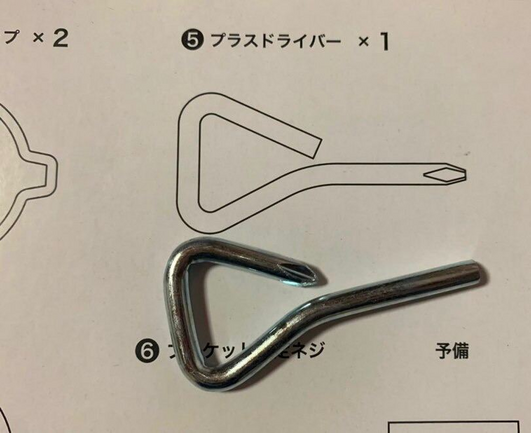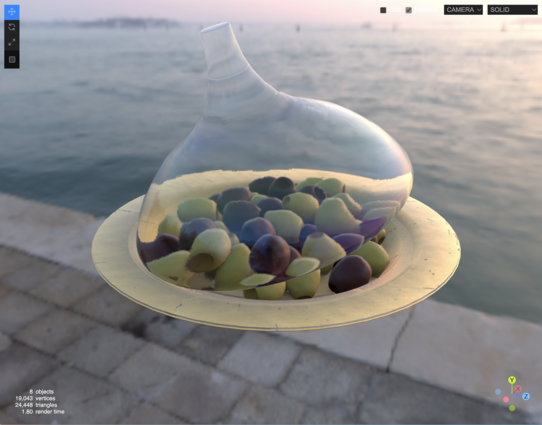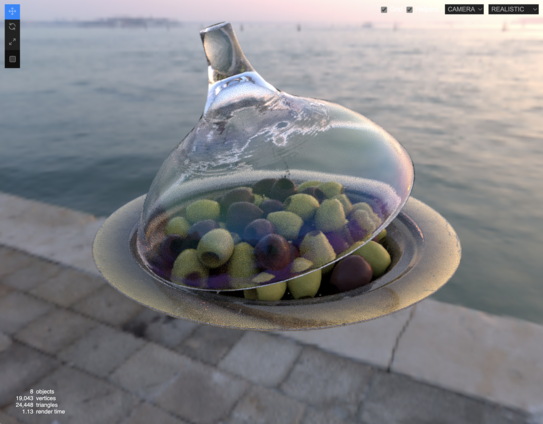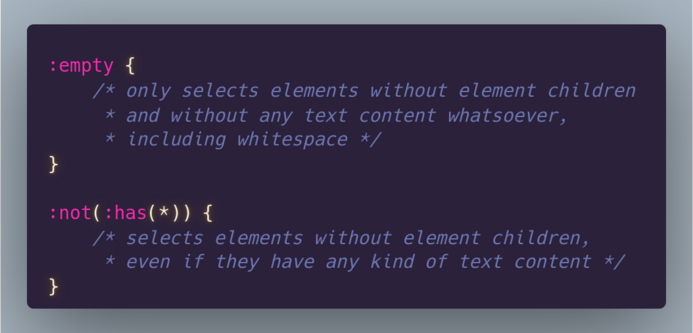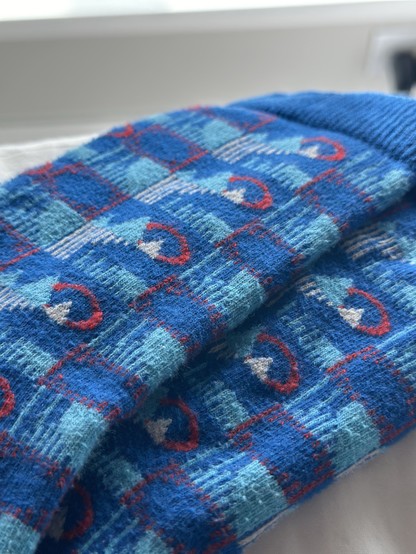

Ada Rose Cannon
source link: https://mastodon.social/@ada
Go to the source link to view the article. You can view the picture content, updated content and better typesetting reading experience. If the link is broken, please click the button below to view the snapshot at that time.

Ada Rose Cannon@[email protected]
I do web stuff and VR stuff. I like HTML.
the #threejs editor has a dropdown to switch between the realtime rasterizer and a path-tracer now, which is pretty cool:
@ada Minor correction: it was April 6th, 2014. I've always appreciated that there's a public record of the first interaction about WebVR. (Unfortunately it's on the birdsite, but )
I was just informed by @tojiro that the initial work of WebVR (which later became WebXR) began 10 years ago on April 14th [edit: 6th]...
We've just wrapped up another Immersive Web face-to-face and the work on WebXR is still ongoing!
I’ve been writing a lot of nesting CSS this week, and I can’t believe how much I love it. Better than Sass. So easy and natural.
bash is so fucking funny. the fact that [ is a command and if [ $a -eq $b ] is actually calling the command [ with args $a -eq $b ] and checking its exit code is so fucking hilarious
like literally run which [ and you get /usr/bin/[
Are you excited for WebXR support in Apple Vision Pro? In Safari 17.4 we added a new`transient-pointer` input mode, so you can create a WebXR experience that works with the interaction model of visionOS.
https://webkit.org/blog/15162/introducing-natural-input-for-webxr-in-apple-vision-pro/
@ada If you are building or maintaining a WebXR app, please take some time to ensure that it's not assuming that you'll only ever have two inputs! And listen for select events and react to the inputs their associated with rather than try to build your own input handling from gamepad or hand pose data. The API and the people working on it try very hard to provide tools to enable the widest device compatibility possible, so make use of it!
Re LRT: @ada has been working hard to figure out how to use the Vision Pro's unique input style with WebXR, and I think the solution that she's worked out with the rest of the Immersive Web group is pretty elegant. The only downside is that if a WebXR app has been hard coded to assume that you'll only ever have input in the form of two controllers then they'll fail to recognize these transient inputs.
I am very excited about this. You can use the gaze and pinch style interactions of visionOS in WebXR! This is a very natural feeling and precise way to interact with VR either up-close or at a distance whilst also being privacy preserving.
If you don't have a Vision Pro then you can test it on your sites in the Simulator via Xcode on MacOS.
https://webkit.org/blog/15162/introducing-natural-input-for-webxr-in-apple-vision-pro/
Margaux got me my favourite pi and I got her her favourite pi. 2 pies! It’s a pi day miracle.
#tinyCSStip One thing that has always annoyed me about `:empty` is that it doesn't work for elements that have text content, but no element children.
`:has()` fixes this problem.
`:not(:has(*))` selects elements that don't have element children, even if they have text content.
Don’t fuck with moon dust. No seriously, do not fuck with moon dust.
Absent any moisture or atmosphere, millennia of asteroid impacts have turned lunar regolith (soil) into a fine powder of razor sharp, glass-like particles. What’s more, the solar wind imparts an electric charge on the dust, causing it to cling to any and every surface it touches through static electricity. On earth, sand tends to get smoother over time as wind and water tumble the grains about, eroding their sharpness. Not so on the moon – lunar dust is sharp and deadly. This is Not A Good Time if you’re an explorer looking to visit our celestial neighbor.
During Apollo, the astronauts faced a plethora of unexpected issues caused by dust. It clung to spacesuits and darkened them enough that exposure to sunlight overheated the life support systems. Dust got in suit joints and on suit visors, damaging them. It ate away layers of boot lining. It covered cameras. Upon returning to the cabin, astronauts attempting to brush it off damaged their suit fabric and sent the dust airborne, where it remained suspended in the air due to low gravity.
Inhaling moon dust causes mucus membranes to swell; every Apollo astronaut who stepped foot on the moon reported symptoms of “Lunar Hay Fever.” Sneezing, congestion, and a “smell of burnt gunpowder” took days to subside. Later Apollo missions even sent a special dust brush with the team to help clean each other and equipment. We don’t know exactly how dangerous the stuff is, but lunar regolith simulants suggest it might destroy lung and brain cells with long-term exposure. 1
In fact the dust is so nasty that it destroyed the vacuum seals of sample return containers. We no longer have any accurate samples of lunar dust, “Every sample brought back from the moon has been contaminated by Earth’s air and humidity […] The chemical and electrostatic properties of the soil no longer match what future astronauts will encounter on the moon.” 2
Whats worse, the solar-charged dust gets thrown up off the moon’s surface via electrostatic forces. The moon doesn’t technically have an atmosphere, but it does have a thin cloud of sharp dust itching to cling to anything it can find.
And it probably isn’t just the moon. “A 2005 NASA study listed 20 risks that required further study before humans should commit to a human Mars expedition, and ranked "dust" as the number one challenge.” 3
The coolest solution I’ve heard about in next-gen spacesuit design is a mesh of woven wires layered into the suit. When activated, the wire mesh would form an anti-static electric field that repels dust. Quite literally a force field. 4
#astronomy #apollo #moon #lunardust
I’m now in the Bay Area and may have some availability to speak at a conference later this year, can anyone suggest any good Web themed conferences that may want a speaker about WebXR that I should put a CFP in for?
Recommend
About Joyk
Aggregate valuable and interesting links.
Joyk means Joy of geeK
